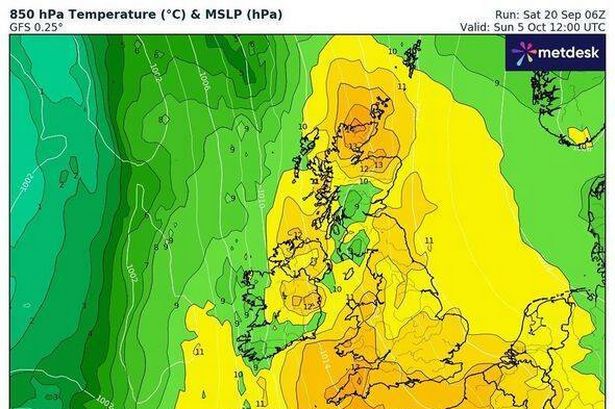Introduction
Indian summer is a term that resonates deeply within the context of UK weather, referring to a period of unseasonably warm weather that typically occurs in autumn. This phenomenon, defined as a warm spell following the first frost, holds significant relevance not only for weather enthusiasts but also for farmers, outdoor event planners, and climate researchers. As the UK faces increasing uncertainties in climate patterns, understanding an Indian summer’s occurrence is more crucial than ever.
What is Indian Summer?
The concept of Indian summer originated from the Native American culture which described the warm weather that often occurs after a frost. In the UK, this period is generally characterised by sunnier days with temperatures reaching above average levels as late as November. Such phenomena can lead to extended growing seasons for some crops, making it beneficial for agriculture.
Current Events and Trends
As of October 2023, the UK has experienced fluctuations in temperature, with certain regions enjoying the benefits of unseasonable warmth. According to the Met Office, this year’s October is expected to see temperatures soar to around 22 degrees Celsius (72 degrees Fahrenheit) in several areas, leading to discussions about the impact of climate change on traditional weather patterns.
This year’s Indian summer followed an earlier-than-usual onset of autumn, characterized by heavy rainfall and cool temperatures, highlighting the unpredictability of the UK’s weather as global warming alters climatic norms. While people took advantage of the warm spell by engaging in outdoor activities, concerns about environmental impacts and future weather anomalies remained a prevalent discussion among scientists and weather experts.
Significance for Readers
The occurrence of an Indian summer carries significant implications for various sectors. For agriculture, warm spells can prolong the harvest period, but they also pose challenges with frost damage if there’s a sudden temperature drop. Outdoor events that benefit from pleasant weather can also leverage this phenomenon to attract visitors.
Furthermore, as the impacts of climate change become increasingly prominent, the unpredictability associated with Indian summers could serve as a reminder for individuals and communities to prepare for climate variability. Whether it involves preparing for warmer autumns or unusual winter conditions, understanding these weather patterns will help residents adapt effectively.
Conclusion
In conclusion, as the phenomenon of Indian summer takes centre stage in UK weather discussions, it remains a reminder of how climate changes are reshaping our seasonal expectations. By analysing these weather patterns and trends, readers can gain insight into adapting their lifestyles and making informed decisions for the future. The importance of staying informed about such climatic occurrences cannot be overstated as we navigate the complexities of an evolving climate.


